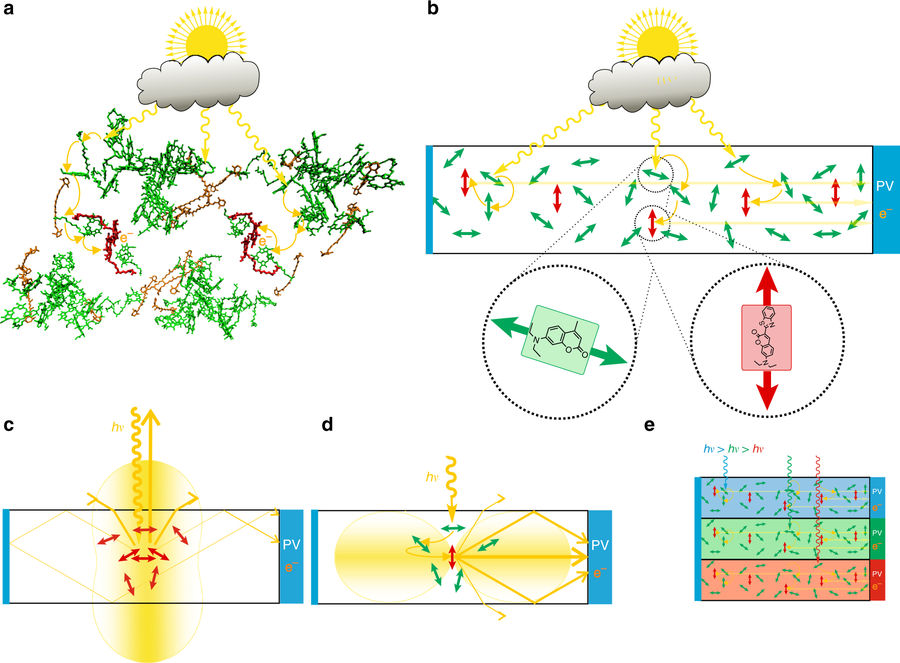Solar concentrators – a type of lens that concentrates sunlight onto a small area – have not been widely adopted in solar energy, as most are only suited to work in conditions of strong, direct sunlight.
Research newly published in the journal Nature Communications, however, describes a new type of solar concentrator based on processes seen in natural photosynthesis. The devices consist of a randomly oriented pigment, which can absorb light from almost any angle of incidence, and funnel it onto molecules which are oriented in a single direction.
According to the University of Braunschweig, this concept can achieve losses during concentration of less than 10%. Tests showed that the concentrators could absorb around 99% of incident light, with a light redirection quantum efficiency of more than 80%.
The scientists expect that in the future, differently tuned concentrators will be able to be stacked on top of each other, creating a concentrator that could absorb the entire light spectrum. The researchers note that the concentrators are made from affordable, widely available materials and could be developed into a cost-effective booster for solar cells.
“The pigments used in our proof-of-principle study currently cover only the blue spectral range and are not stable enough for long-term exposure to sunlight,” said lead researcher Peter Jomo Walla. “However, our concept allows for screening a multitude of additional stable pigments of different colors for their ability to act either as light-harvesters or light-redirectors. We are very enthusiastic about finding further suitable pigments and stacked architectures to ultimately cover the entire solar spectrum with high efficiency.”
This content is protected by copyright and may not be reused. If you want to cooperate with us and would like to reuse some of our content, please contact: editors@pv-magazine.com.









By submitting this form you agree to pv magazine using your data for the purposes of publishing your comment.
Your personal data will only be disclosed or otherwise transmitted to third parties for the purposes of spam filtering or if this is necessary for technical maintenance of the website. Any other transfer to third parties will not take place unless this is justified on the basis of applicable data protection regulations or if pv magazine is legally obliged to do so.
You may revoke this consent at any time with effect for the future, in which case your personal data will be deleted immediately. Otherwise, your data will be deleted if pv magazine has processed your request or the purpose of data storage is fulfilled.
Further information on data privacy can be found in our Data Protection Policy.